Field trainingEach national Antarctic operator has its own field training programme, the intensity of which depends on how challenging the anticipated terrain will be, e.g. whether there will be abundant crevasses, and how remote from base the work to be undertaken will be. Kiwi training programmes last 2 or 3 days, and the instructors include experienced mountaineers. Apart from lectures, the training programme involved a range of activities on the McMurdo Ice Shelf, adjacent to Ross Island, with a splendid view of the volcano, Mt Erebus. Training involves creating a variety of shelters (polar tent, standard mountain tent, snow hole, snow block shelter, igloo) and sleeping in them overnight. Walking over pressure ridges and sea ice, and experiencing rescue situations were all part of the outside activity. |
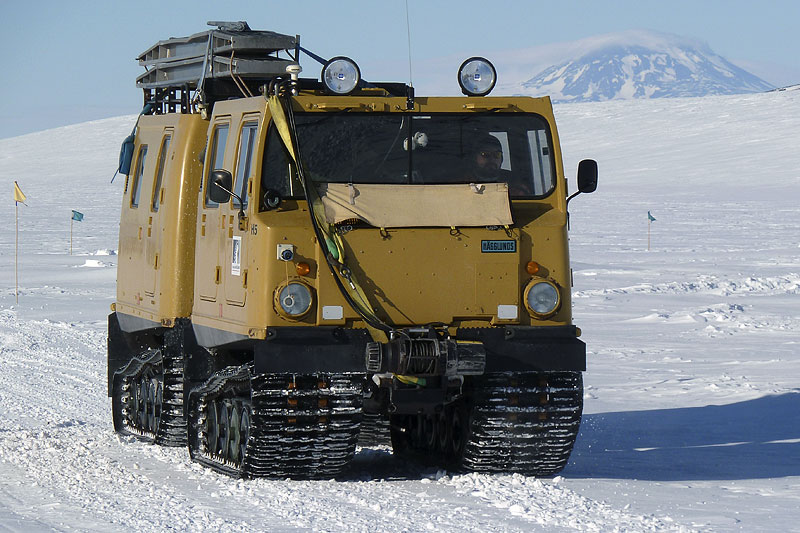 An over-snow tracked vehicle of Swedish military origin, the Hägglunds, is a common means of transport in Antarctica. If they break through sea ice, they can float. |  A hive of activity in view of Mt Erebus. Polar tents are pitched, and a snow hole and snow block shelter are under construction. | 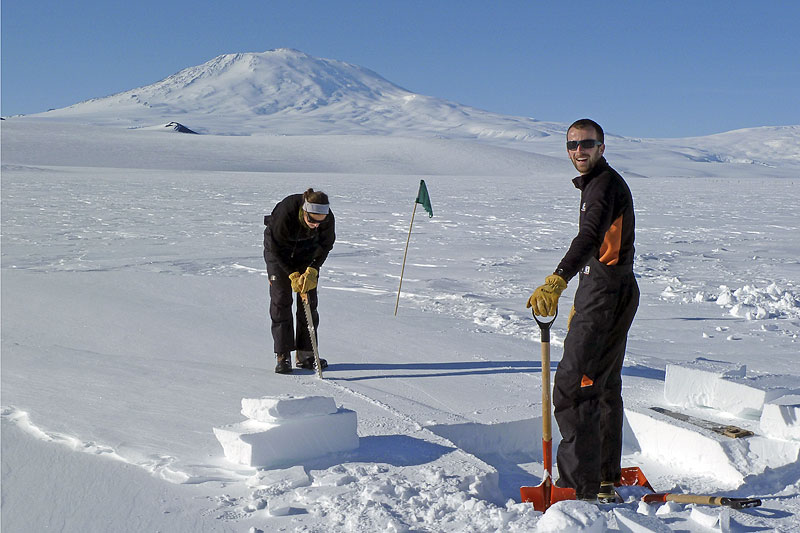 Cold wind-packed snow is good for making snow blocks using a special long snow saw. | 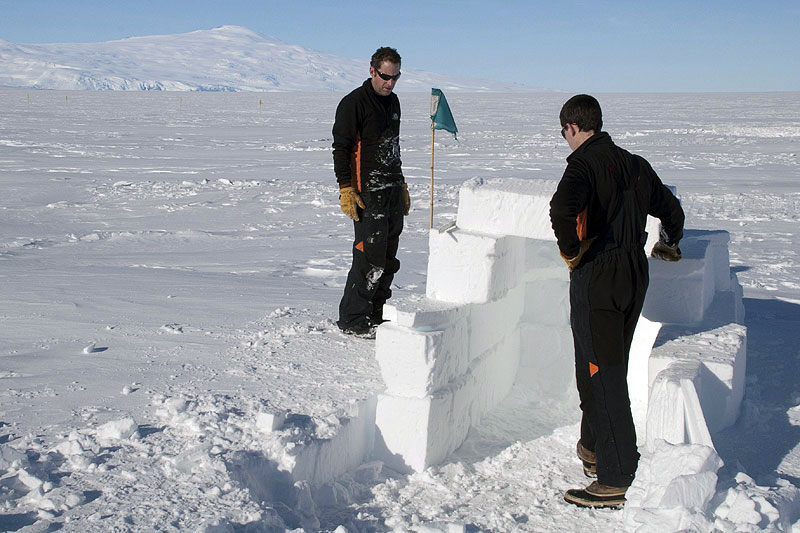 The snow blocks are here being used to construct a surface shelter. |
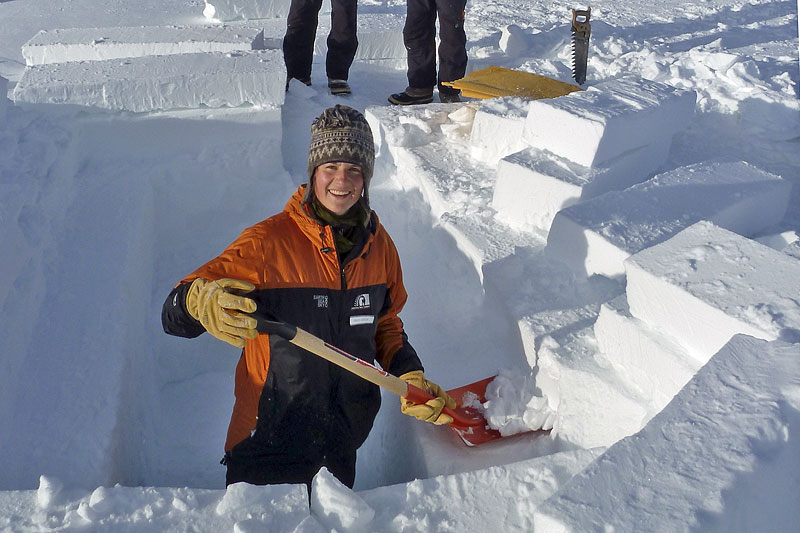 Body-length snow hole under construction. The blocks will provide a roof. | 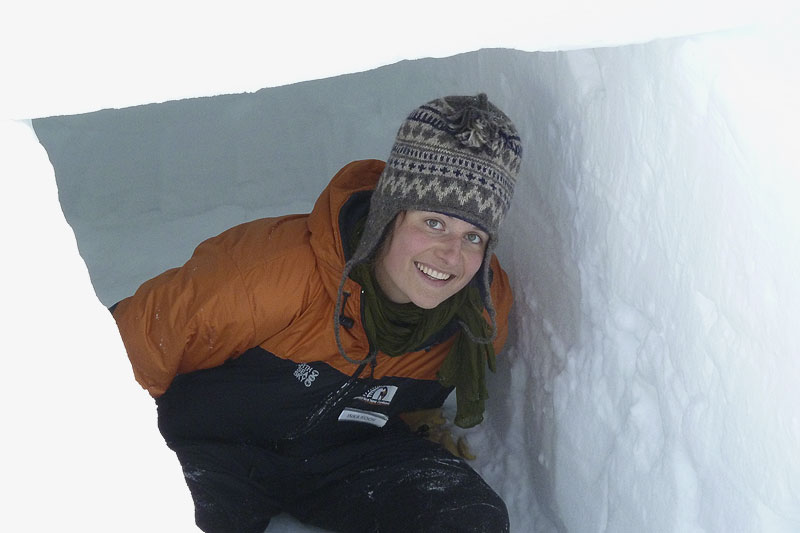 A nearly complete hole gives Inka Koch a happy smile. | 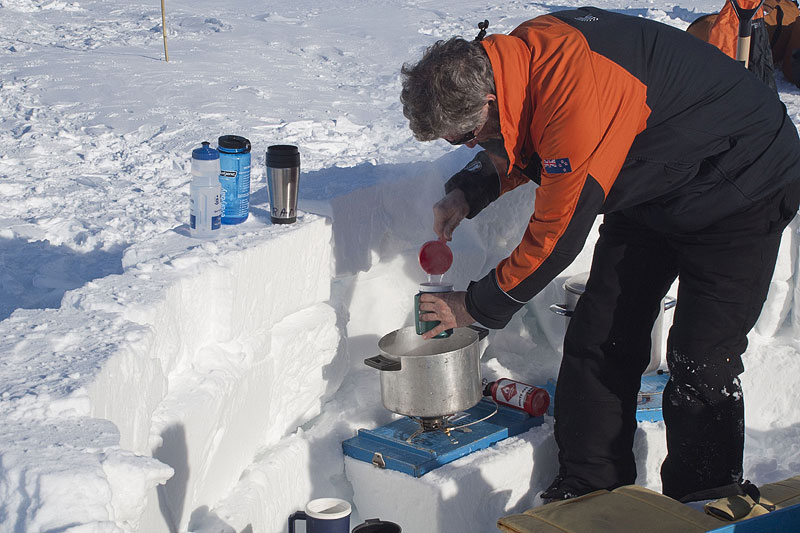 Snow blocks were also used to construct an outside kitchen shelter, where we practiced using pressure stoves to cook a dehydrated meal. | 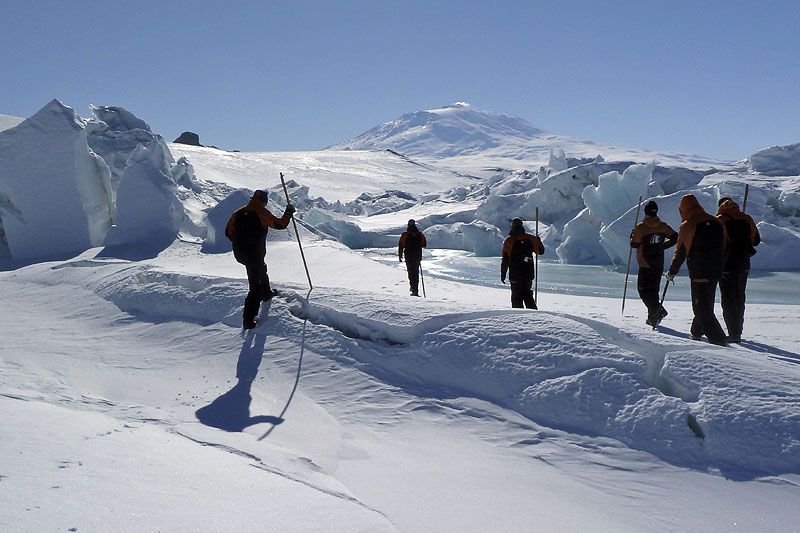 Using long wooden spiked poles to test for holes in the snow-covered sea ice. Beyond the pressure ridges is Mt Erebus, emitting a wisp of steam. |
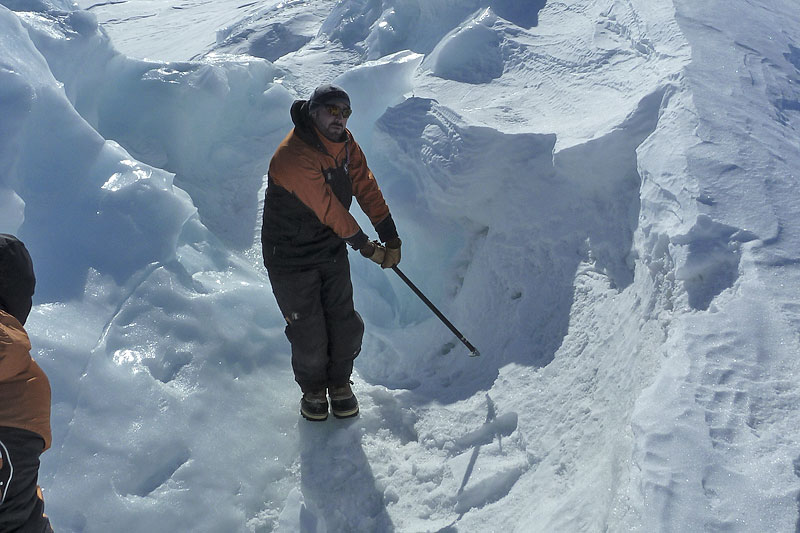 Wielding a long ice axe to cut steps in the hard ice of a pressure ridge, formed where sea ice has pushed against the McMurdo Ice Shelf. | 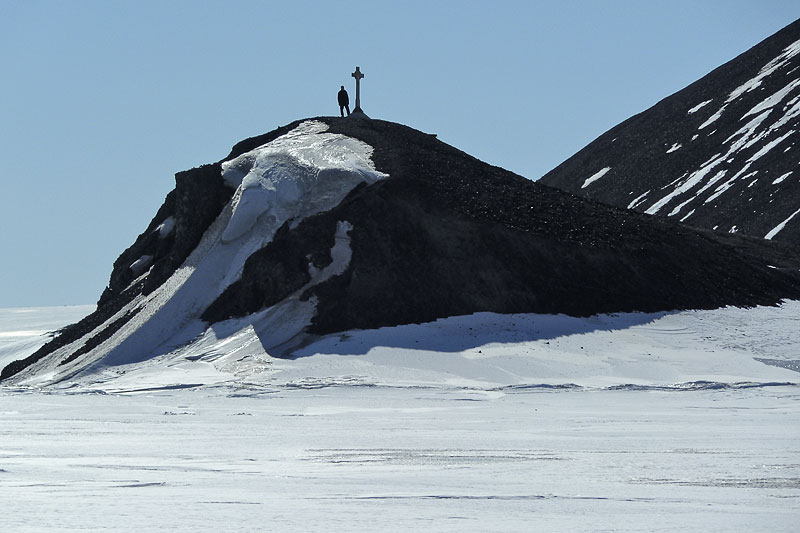 Vince’s cross near Hut Point on Ross Island. Vince was a member of Scott’s 1901-1903 expedition and fell to his death down a slope in a blizzard, never to be seen again. | | |
| Photos Michael Hambrey, November and December 2010. |